Before buying a Siberian Husky pup, you heard they are medium-sized dogs and perfect to be kept as pets. But wait… your pup won’t stop growing, and his never-ending growth makes you wonder when do huskies stop growing and how big they can get?
There are many more concerns you look into before committing yourself to a lofty relationship. Those concerns can range from how the husky looks, whether to go for a male or female dog if a husky would protect you, if they need companions, or if they make up great family pets. So, hold your horses, and be all eyes to look into a perfect guide that talks everything about Siberian Huskies.
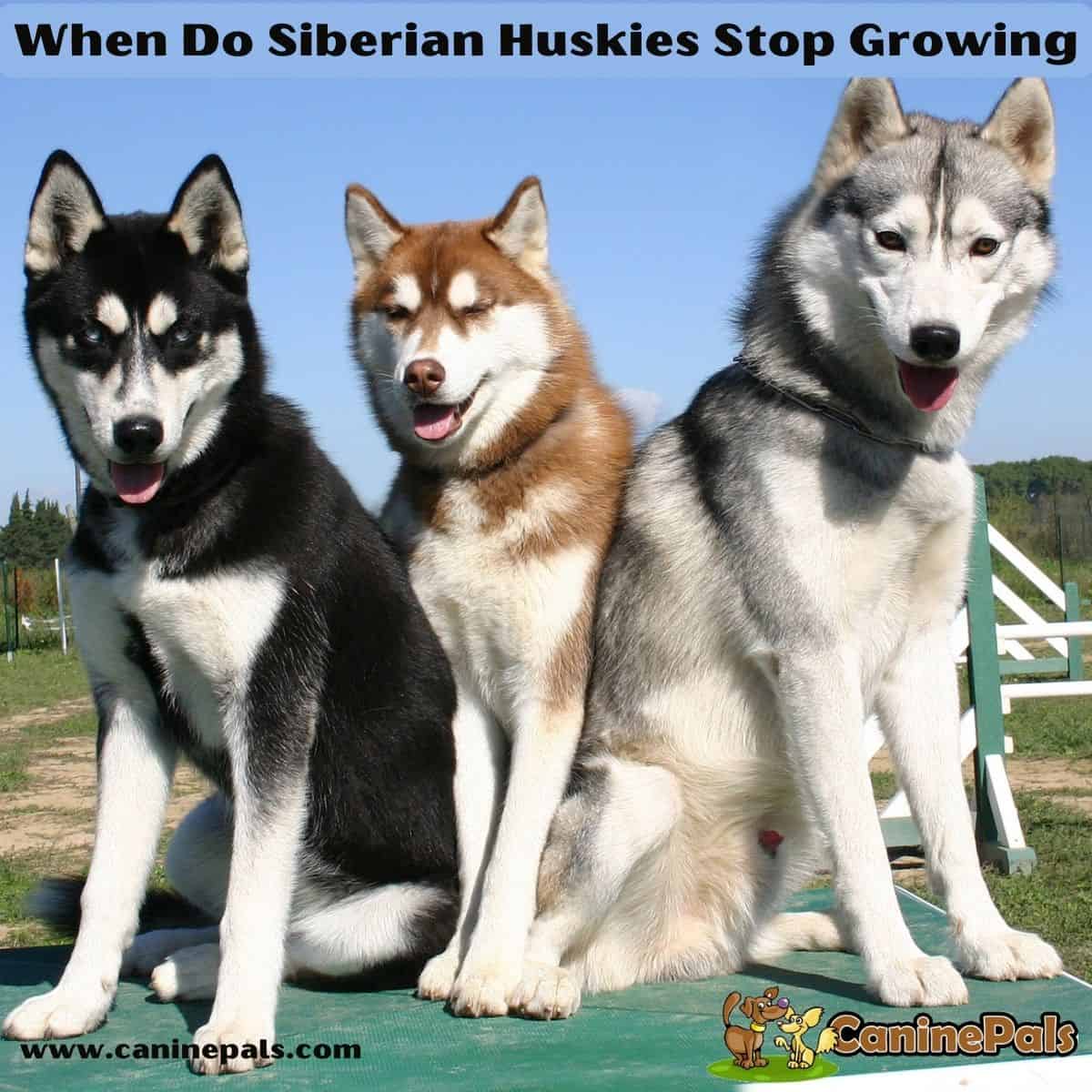
Growth Phases of Siberian Huskies
The loving, caring, affectionate, yet super-energized Huskies grow up too fast. Siberian Husky growth is divided into phases, and it is important to learn the changes they go through in each stage to help them nourish adequately. Their stages begin when they are born and proceed to early puppyhood, then late puppyhood, and finally adulthood.
● Newborns to Two Weeks
If you’re thinking of getting a newborn puppy, his mother would even become a part of your family. Newborn pups cannot be sold without their mother. The puppies can neither see nor listen for the first two weeks of their lives. Their internal organs are still in the phase of development. They cannot interact with the world or even their littermates.
The presence of their mother is very crucial as you cannot feed the pups anything solid. Mother’s feed is the best food they should be getting initially. Lack of mother’s feed can result in poor growth and can even lead to health issues.
If you want your huskies to grow healthy and wealthy, make sure you take care of their mother. The mother is the main source of nutrition for the pups.
● Three to Eight Weeks
Congratulations! Your huskies can now open their eyes a little and can even listen. You can hear them make the cutest sound and take clumsy baby steps. But pups of this age are still fragile and need their mom by their side. The only food they need is the one that comes from their mom.
● Eight to Twenty Weeks
Though a puppy can be adopted on its own at the age of eight weeks, it would be great if its vigilant mother is still by its side to take care of them. Now is the time when your pups are most lively and energetic. Your responsibility to take care of their nourishment and give them the utmost love is of prime importance. Huskies are a very energetic and playful breed. They grow at a very fast rate too. That is why they need a lot of food during this stage. Make sure you serve them plenty. You should also start socializing your huskies with other animals and people to develop healthy socializing habits. If you do not let them mingle with other dogs, they can develop habits of showing aggression when seeing other dogs.
● Three Months to Six Months
Huskies grow tremendously during this span. This is also the phase when you should start their training. Introducing them to new people in your surroundings and developing contact with other animals is important.
This is the time when you build their personality and stimulate their mental capabilities.
Huskies were bred to hunt. Their hunting instincts should never be turned a blind eye to. Therefore, it is important to socialize as much during this phase to avoid any unpleasant mishaps in the long run.
● Six Months to Twelve Months
Your husky is still in the development phase. As the year comes to an end, by this time, your husky has probably hit his maximum height. But their growth still won’t stop. The filling-up process is still to go.
We have added two tables in the article later. The tables below include the heights and weights of both male and female huskies. As male huskies are bigger than females, their growth rate is even different than females. The chart will help you to calculate the estimated weight according to the height of your puppy. If you do not have a specialized scale, no worries. You simply need to get skilled in standing on a bathroom scale with your husky in your arms.
Remember that your husky is still a puppy, and you need to look after his physical and mental growth and train him well for everyone’s well-being, including your puppy.
● Adulthood
If you have been watching your steps in training since the beginning, well done! You now have a well-mannered adult pet dog to spend many more years in prime joy!
From 12 months to three years, Siberian Husky growth is complete. They are even able to reproduce at the age of three years. They attain their maximum height at the age of 18 months, and then their bodies fill up mass for the next one and half years.
Make sure you provide your husky with healthy food so he gains muscle mass rather than getting obese. Since Huskies are highly energetic, they need regular physical activities to utilize that energy.
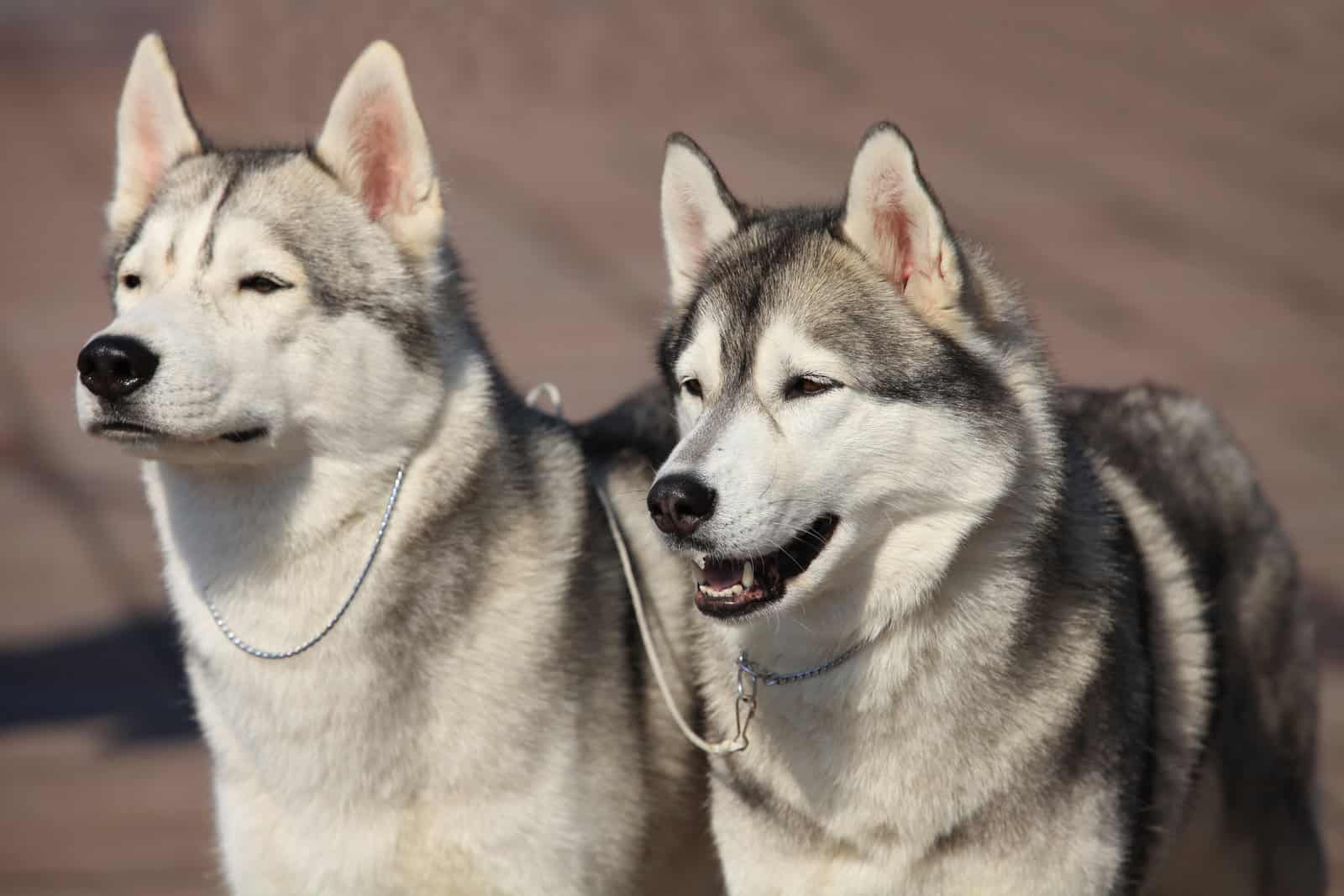
When do Huskies Stop Growing?
Over the first years of their life, Siberian Husky growth is rapid, so that you really cannot help researching; when do Huskies stop growing? By the time your Husky is 12 to 18 months, he has probably obtained his maximum height. And by the time your husky is thirty-six months, he is a fully grown adult capable of reproducing.
During that span, your husky needs plenty of food and water. Besides, this is also an ideal span for training him.
When it comes to the height and weight of male vs. female Husky, males tend to grow bigger than females. The average height and weight of a male husky are 22-24 inches and 44-60 pounds respectively. In comparison, an average female husky would be around 20-22 inches tall and would weigh 35-50 pounds.
Make sure the weight of your husky is never more than the recommended weight.
The below tables will help you estimate if your husky is growing adequately. Make sure to look into the right gender chart.
| Growth Timeline of Male Huskies | ||
| Age (months) | Height (inches) | Weight (lbs) |
| 2 to 4 | 10 to 12 | 10 to 25 |
| 4 to 6 | 12 to 15 | 25 to 40 |
| 6 to 8 | 15 to 19 | 40 to 50 |
| 8 to 10 | 19 to 22 | 50 to 55 |
| 10 to 12 | 22 to 24 | 55 to 60 |
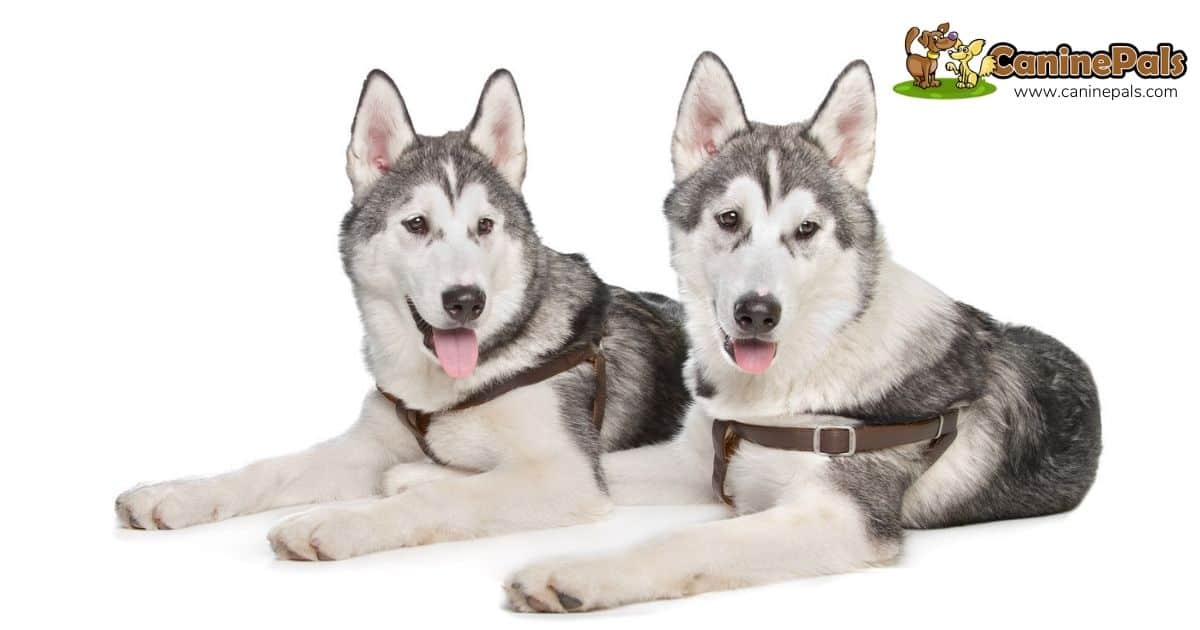
| Growth Timeline of Female Huskies | ||
| Age (months) | Height (inches) | Weight (lbs) |
| 2 to 4 | 10 to 12 | 10 to 25 |
| 4 to 6 | 12 to 14 | 25 to 38 |
| 6 to 8 | 14 to 16 | 38 to 46 |
| 8 to 10 | 16 to 18 | 46 to 50 |
| 10 to 12 | 18 to 20 | 50 to 55 |
Measures That Can Help Your Husky Grow Better
Neither should your puppy be underweight nor should he be overweight. To make sure your puppy is growing at an ideal rate, you need to be careful and take measures that will enhance your puppy’s sound growth.
The following factors will help you cope well with your puppy’s health.
- Balanced Nutrition
Remember, a healthy body is a happy body. Just as a balanced diet is essential for humans to grow well, the same is the case with your pup. Your pup needs an adequate amount of nutrition, especially while he is growing. Diet also affects the way your puppy looks. The better the diet, the shinier the coat. A vet can always help you choose the right food in the right amount for your huskies.
- Vaccination
Vaccinations play an important role in your puppy’s growth. Your pups might catch an infection that can cease or slow down your pooch’s growth. Getting him vaccinated on time prevents not only infections but also ensures maximum progress in his development.
- Prevent Injuries
Who likes injuries anyway? But your husky’s growth plates are too fragile to bear any injuries. Avoid rigorous training and never encourage him to jump from high places. Make sure they get ample amounts of rest.
- Socialize them Well
You must be wondering what socializing has to do with growth. Well, it is a factor that plays an equally important role as the rest of the others. Dogs are pack animals, and they love companions. If you do not socialize with your dogs, they may get sick and stressed out about being alone. And stress is the key factor that affects growth.
Male vs. Female Husky
Now you are well aware of the size of the Huskies. If you dwell in an apartment and are looking for lapdogs for smaller places, or if you are a big dog person who prefers bulky dogs, Huskies aren’t for you. They are mid-sized dogs that need enough place to cherish their adventurous cravings. If you are sure the huskies are the right size for you, so now is the time when you need to know about male vs. female husky traits.

Similar to humans, animals of different genders show different personalities. Not every personality and temperament is suitable for everyone. Knowing the major differences between male vs. female Huskies will help you to decide which gender would be easygoing for you.
The below table discusses male vs. female Husky traits in detail.
| Personality Trait | Male Siberian Husky | Female Siberian Husky |
| Dependency | Male huskies tend to be more dependent on humans as well as their pack. They are more extroverted and stay as close to you as possible. | Female huskies, on the contrary, don’t prefer dependency. They are an independent breed who can be happy on their own. |
| Dominance | Males are pretty much dominant and, at times, can even show authority over you. If you bring a male husky to your place, make sure you make them realize from the beginning that you are the pack leader, they aren’t.
Another way males show territorial dominance is by peeing on everything. |
Female huskies are dominant too. But their dominance is not much as compared to that of males. However, you need to make them realize too that you are the one with authority, or else they’ll surpass you. |
| Trainability | Since males are dominant and dependent, training them can be challenging. Maturity comes later in them. Their authoritative personality takes over you, and they won’t obey your commands easily. The best time to train a male husky is when they are pups. If trained later, you will have to deal with behavioral problems.
However, it never means that training a male husky is impossible. They are intelligent dogs and can be well-trained with patience. |
Female huskies are calmer and more mature than male huskies. Training them is far easier than training the males. As compared to males, females don’t show much authority and will obey you. Because of their sensible and consistent nature, female huskies can easily be trained even if trained later. |
| Temperament | Male huskies are more loveable and show affection towards their owners. They are extroverts and like to spend time outside and play more. Owners claim to have better bonds with male huskies than females. | Female huskies are introverts and more mature than males. They enjoy their ‘Me Time’ more, and the only time they are with their masters is when it’s playtime. Female huskies are also prone to mood swings.
However, it never means that you cannot grow a nice bond with females. The bond with them can be equally stronger as it is with the males. The owners need to ensure good ways to strengthen bonds. |
| Appearance | The wolf-like male huskies are bigger than the females. Their average weight is around 20 to 27 kgs, while their height is 54 cm to 60 cm. They have a more masculine head which helps them attract females. | Female Huskies also have the looks of a wolf. Their size is smaller than that of males. They weigh around 16 to 23 kgs while their height approximately lies between the range of 50 to 56 cm. |
Now that you have known the male vs. female husky traits decide for yourself what suits you better. If you need a more aggressive, dominant, authoritative, difficult to train, but the most loving, affectionate, and playful bud, go for the males. If you need a calmer, mature, easy-to-train but introverted and shy playmate with mood swings, go for the females.
Regardless of gender, if you sign in for huskies, you are in for some quality time of your life. Huskies, as compared to other dog breeds, in general, are not much of an aggressive breed. The above analysis is between the genders of the same breed. But if you analyze huskies’ traits with other breeds, huskies always stand in the limelight.
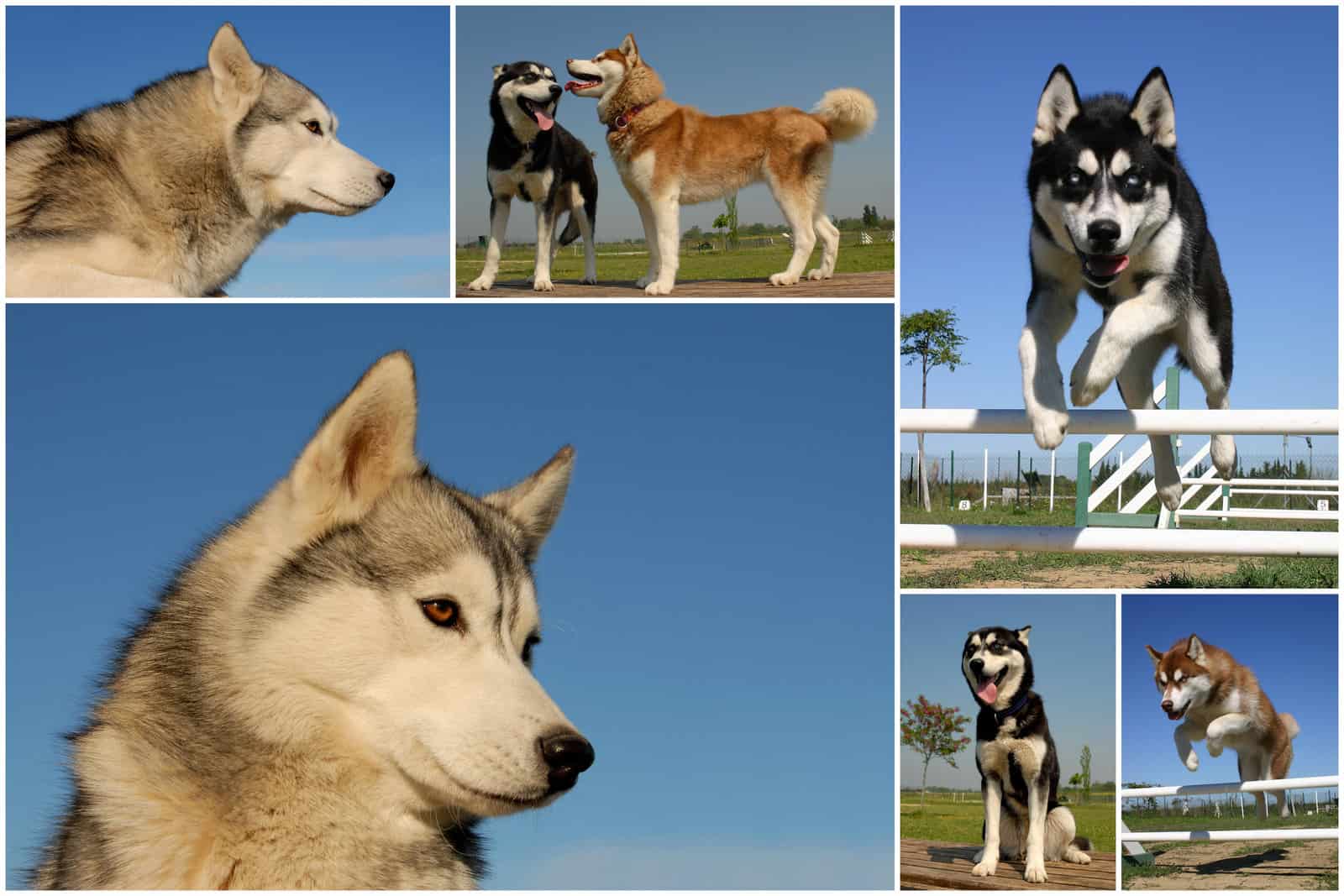
Husky Colors and Markings
Siberian Huskies come in a huge range of colors and patterns. Although AKC provides a standard chart of husky colors and markings including pure white, sable and white, gray and white, black and white, red and white, and agouti and white, other colors that aren’t included in the chart like pure black, brown, tan, copper, or a combination of these are also recognized.
AKC recognizes markings such as pinto, black points, or piebald, but these are not set as a standard by the AKC.
The following is a brief yet comprehensive discussion of husky colors and markings:
- White – White huskies are either pure white or have a yellow tint on them. A few black guard hair can also be seen.
- Sable and White – When the undercoat is red/copper and the topcoat has red hair with black hair tips, we get a sable color. The color is seen in huskies with a combination of white.
- Gray and White – Gray color may present many shades in huskies. Some are more intense than others, and these shades of gray are together seen with white color.
- Black and White – The Siberian Huskies are commonly seen in the pattern of black and white. Black displays different intensities, and sometimes the shade makes the huskies look silver.
- Red and White – Red color may range from copper red to deep brown-red, altering with white.
- Black Husky – Black huskies, have a full-body black coat.
- Brown Husky – The coat is full brown.
- Other Colors – Huskies are seen in many more color variations like tan and black, white and tan, copper and white, brown and white, gray and black, and many more.
Are Huskies better in Pairs?
If we look into the history of Siberian Huskies, they were bred in good enough numbers, like fifteen at a time or so as working dogs. These dogs worked together, slept together, lived together, played together, and enjoyed each other’s company together with humans. That is why even today, they have a very strong instinct for companionship.
So, if you ask, are huskies better in pairs? The simple answer would be, they need company all the time, whether humans or another canine buddy.
The following are good enough reasons for you to pair your husky with another one:
- If you stay out of the home for a long enough time, huskies may be severely get affected by separation anxiety. Getting them another bud is the right call.
- If you already own a husky puppy, training another canine pal would become quite easier for you. This means you can reap the benefits of more fur friends with less hassle.
- The dogs will themselves entertain in case you are busy with some other chores and may not be able to look after them for a while.
If you are looking for a companion for your Siberian Huskies, the best choice is a husky. But they may get along with other canine buddies as well. The best ones are Alaskan Malamute, German Shepherd, Labrador, Golden Retriever, Boxers, and Dalmatian.
Are Huskies Protective?
If you need a Husky to protect you and if you are searching, are huskies protective? The simple answer is no!
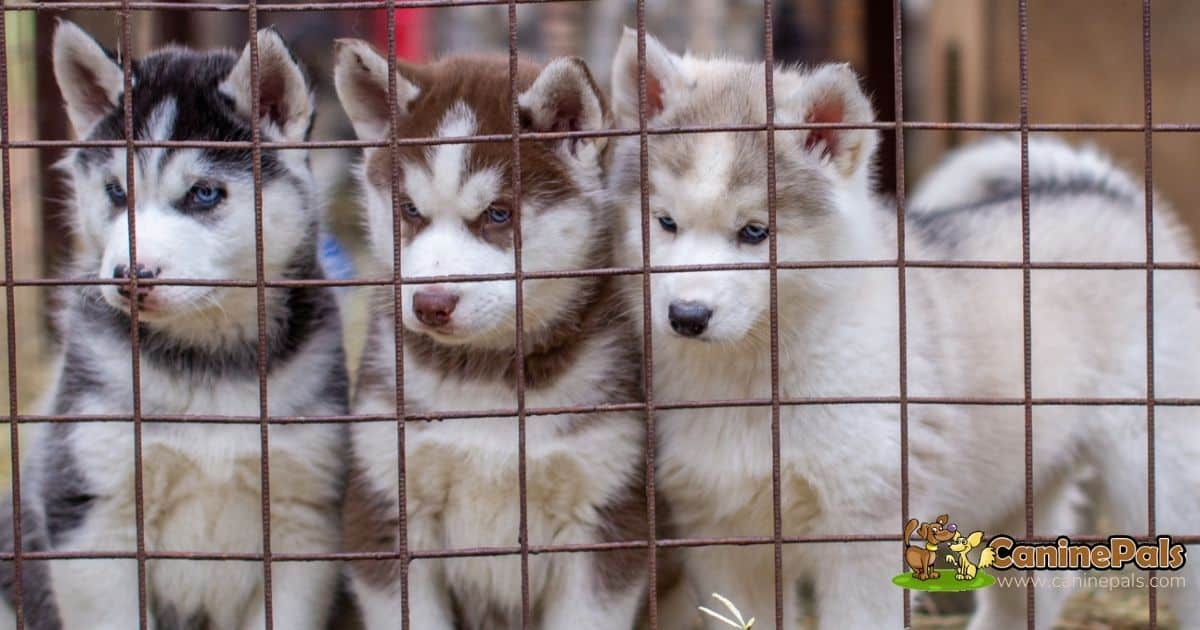
Huskies do not guard dogs. Their wolf-like looks may deceive you into believing that they can protect you, but the truth is they are the most friendly among all dog breeds. They need companions, and they socialize well with people. So if intruders break into your home, a few treats and nice play with your husky, and chances are your husky will befriend them.
Interesting Facts About Siberian Huskies
The Siberian Husky was bred as a sled dog in Northeast Asia and is believed to have originated from the Chukchi Tribe who lived off the east Siberian peninsula. He has great endurance and is willing to work very hard. He was used in the 1908 All-Alaskan Sweepstakes, which was a 408-mile dogsled run. He also served time in WWII in the Army’s search and rescue service.
His coat is thicker than most other dogs so he can handle the icy cold climate. He has a dense cashmere-like undercoat and a coarse, longer top coat. He has an even-tempered nature which makes him suitable for anything including being a therapy dog and sledding. He can be any color with markings of any color. His coat needs to be brushed every week. He needs daily exercise, whether in an enclosed area or by having walks. He must be supervised in the home and around small animals because of his predatory nature.
He’s 20 – 23.5 inches high.
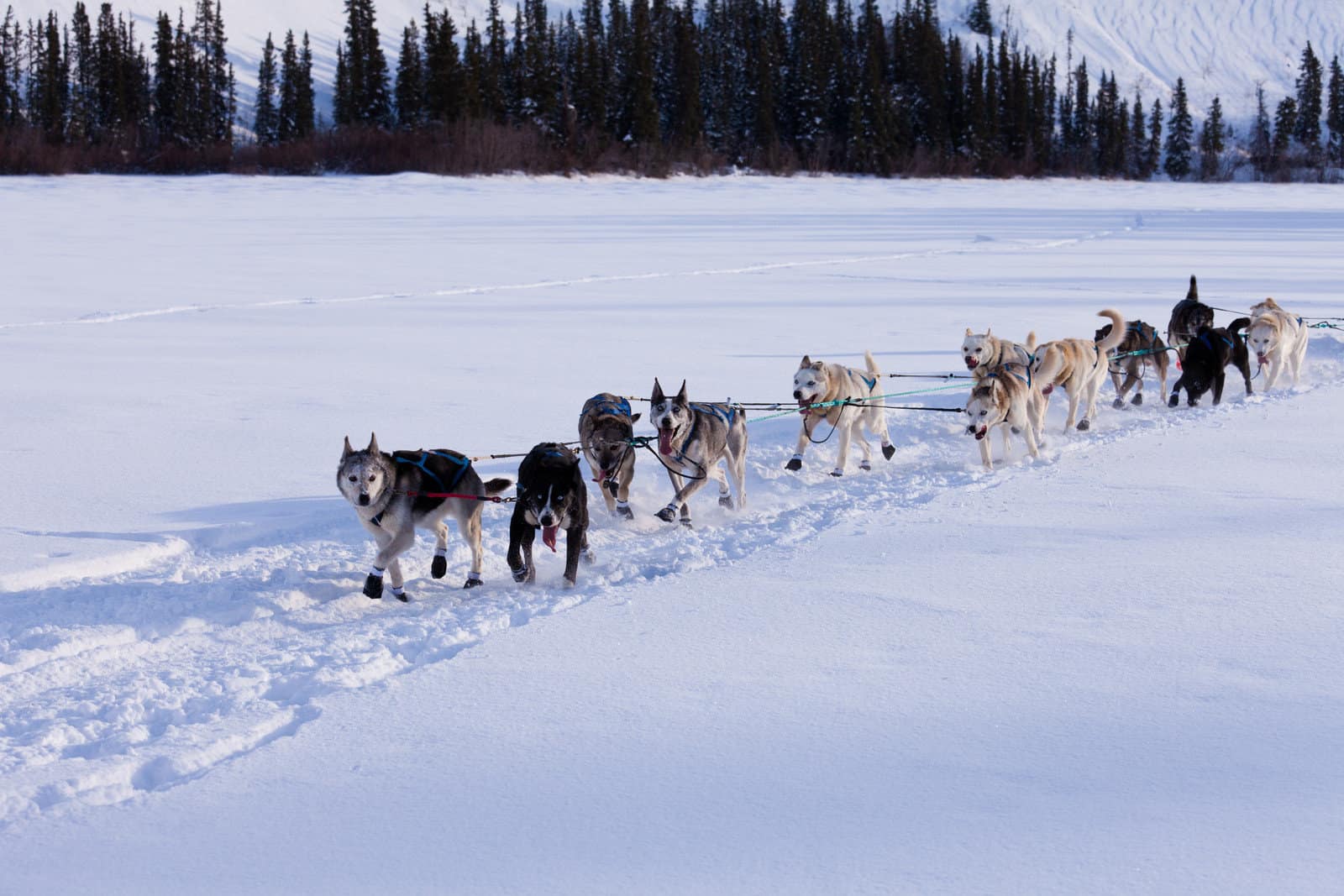
When Do Siberian Huskies Stop Growing: Last Words
The above article provides all the useful insights you need to know before committing yourself to a Siberian Husky. The rate of their growth, their colors, and markings, their temperaments, if they’ll protect you, and if they need a companion in case of your absence.
The comprehensive guide will help you to decide if husky is the right choice for you!
Pro Tip: Huskies were bred as sled dogs. That is why they run very fast! Never leave them without a leash, I repeat, never! Besides, make sure your home is well-fenced with huskies.
Copyright CaninePals.Com. All Rights Reserved.
References and Further Reading:

